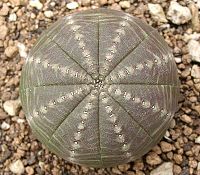
Photo from wikipedia
Proteases are enzymes that cleave peptide bonds of other proteins. Their omnipresence and diverse activities make them important players in protein homeostasis and turnover of the total cell proteome as… Click to show full abstract
Proteases are enzymes that cleave peptide bonds of other proteins. Their omnipresence and diverse activities make them important players in protein homeostasis and turnover of the total cell proteome as well as in signal transduction in plant stress responses and development. To understand protease function, it is of paramount importance to assess when and where a specific protease is active. Here, we review the existing methods to detect in vivo protease activity by means of imaging chemical activity-based probes and genetically encoded sensors. We focus on the diverse fluorescent and luminescent sensors at the researcher's disposal and evaluate the potential of imaging techniques to deliver in vivo spatiotemporal detail of protease activity. We predict that in the coming years, revised techniques will help to elucidate plant protease activity and functions and hence expand the current status of the field.
Journal Title: Journal of experimental botany
Year Published: 2019
Link to full text (if available)
Share on Social Media: Sign Up to like & get
recommendations!